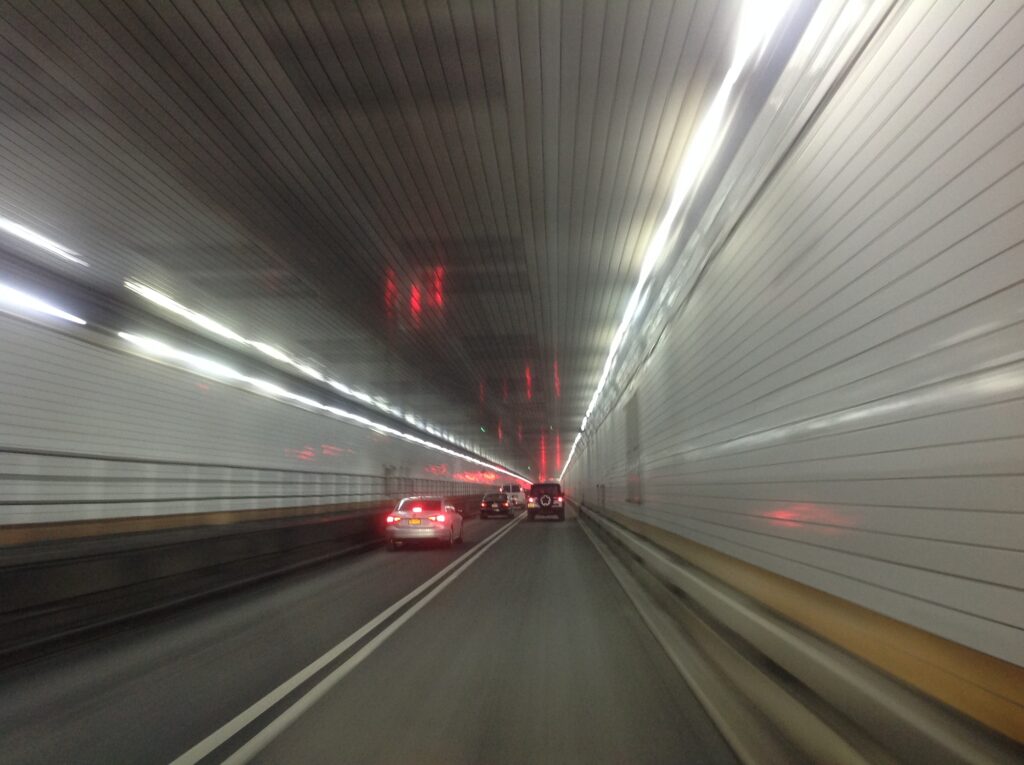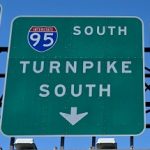The Hudson Hussle

New Jersey and New York are like the old married couple that are forever irritating each other but can’t afford to get a divorce and have nowhere else to go because nobody really likes them.
This week it was reported that New York Metropolitan Transportation Authority CEO Janno Lieber did a “little jig” on the way up to the microphones at Gov. Kathy Hochul’s press conference to celebrate federal approval of her congestion pricing plan that levies as much as a $23 charge for everyone driving into Manhattan.
“Congestion pricing will reduce traffic in our crowded downtown, improve air quality and provide critical resources to the MTA.” Governor Hochul proclaimed.
Boosters of the congestion pricing approach to the success of the strategy in London where it was put in place and 2003.
“London has also experienced environmental and public health benefits as a result of less traffic in the inner city,” according to the Tri-State Transportation Campaign. “From 2002-2003, carbon dioxide (CO 2) emissions declined by 16 percent, nitrogen oxide (NO X) emissions declined by 13.5 percent, and particulate matter (PM10) declined by 15.5 percent. As a result of these reduced vehicle emissions, there is a reduced risk of serious illnesses such as asthma, bronchitis, and heart attacks. According to a recent study, 1,888 extra years of life have been saved among London’s more than eight million residents who are now breathing cleaner air.”
In a press statement the Murphy administration slammed the Federal Highway Administration’s approval of congestion pricing as “yet another slight against hardworking New Jerseyans in favor of an agency [MTA] concerned not with removing vehicles from our roads, but with lining its own coffers.”
The Murphy administration vowed to “stand resolutely against a tolling scheme that will disproportionately burden environmental justice communities and severely harm our commuters and transit agencies.”
Murphy’s counter offensive would rely on the nasty neighbor go to tactic of retaining a really expensive law firm.
“While we are not necessarily opposed to a carefully crafted congestion pricing proposal, we are deeply disappointed by the FHWA’s limited review and skeptical of the motives of a financially ailing [MTA] agency that has failed to meaningfully engage with our Administration on this issue,” the statement said. “To that end, we have retained Randy Mastro and Craig Carpenito of King & Spalding to explore all of our legal options, and we anticipate announcing a course of action soon.”
Yes, that’s the same Randy Mastro who while he was at another law firm lead the multi-million-dollar taxpayer funded defense of Gov. Christie during the Bridgegate imbroglio.
Last month, the congestion pricing plan inspired a rare bi-partisan response from New Jersey’s Congressional delegation who signed on to support the Stop New Jersey Congestion Act. It would require that New Jersey have “a seat at the table on any congestion pricing system that would impact the state,” according to Sen. Robert Menendez (D-NJ). “At the end of the day, we are not New York’s piggy bank. This is all about a money grab for the MTA and does not consider the adverse consequences to New Jersey. This is not a one-way street.”
Rep. Josh Gottheimer (D-5th) called the congestion levy as “a cash-grab to bail out the terribly mismanaged MTA and a plan that will increase pollutants, particulate matter, nitrogen oxide, carbon monoxide and carcinogens like formaldehyde in New Jersey. And it will increase truck traffic in Bergen County.”
A few days earlier, Menendez and Sen. Cory Booker, (D-NJ), wrote Secretary of Transportation Pete Buttigieg that New Jersey residents, who already pay up to $17 to cross the Hudson would be hit with the additional $23 which would “greatly increase the financial burden on families that are already stretched thin.”
“Increased truck and vehicular traffic, as outlined above, will inevitably increase the strain on New Jersey roadways and infrastructure,” New Jersey’s two Senators reasoned. “Additionally, increases to NJ Transit and PATH ridership could match or outpace increases to New York City transit ridership, placing increased strain on these transit systems. Yet, New York City’s Metropolitan Transportation Authority (MTA) will receive a potential windfall of $1 billion annually in new revenue under the CBD Tolling Program to balance its budget and upgrade its transit system, while the State of New Jersey won’t see a dime to offset its own impacts.”
In New York State’s press release the Hochul administration countered the Final Environmental Assessment had considered “the potential impacts of Central Business District Tolling on traffic congestion, transit, air quality and numerous other environmental indicators in 28 counties across New York, New Jersey, and Connecticut. The Study Area contains 22 million people, including 12.3 million residents residing in environmental justice communities, and five Tribal Nations.”
New York’s announcement continued. “The Final Environmental Assessment assesses impacts to traffic and public transportation for a regional transportation network with 28.8 million journeys per average weekday, 61,000 highway linkage points, 4,600 traffic analysis zones, 44,267 bus stops or transit stations, 4,170 transit routes, and more than a dozen public transportation providers in addition to the MTA, including NJ TRANSIT, PATH, ferries, and regional bus systems including Westchester County Bee-Line, NICE, and Suffolk County Transit.
I first started writing about the congestion pricing proposal back when Mayor Bloomberg proposed it in 2008 when I had the opportunity to ask a Senator Barack Obama, who was in a tough New York State primary fight with Senator Hillary Clinton, what he thought about the controversial proposal.
“I think Mayor Bloomberg’s proposal for congestion pricing is a thoughtful and innovative approach to the problem,” Obama said.
Back then it barely got through the New York City Council and was flat out rejected by the New York Assembly. It was a fatal combination of suburban disdain and outer borough outrage particularly in blue collar neighborhoods that were really mass transit deserts where essential workers had shift work out of sync with rush hour.
For generations, our region and the nation has chronically underfunded our transportation infrastructure up until passage of President Biden’s $1.2 trillion Infrastructure Investment and Jobs Act.
Where the MTA needs ongoing help is for funding the day-to-day operations. Reportedly, imposing the congestion pricing fee will generate $1 billion annually for the MTA that’s chronically short of money by Wall Street design.
The MTA is mired in structural debt with New York State Comptroller Tom DiNapoli noting that the MTA’s “outstanding long-term debt climbed from $11.4 billion in 2000 to $42.3 billion in 2022 and will reach $56.7 billion by 2028.”
By 2023, the MTA expects 17.9 percent of its revenue will go toward debt payments and approach 20 precent by next year. Wall Street and the world’s highest end earners snap up the MTA bonds, because they are tax exempt, and provide a great way to put billions of dollars of wealth beyond the reach of the tax man while earning interest.
James Henry is a leading international economist and attorney who is an expert on tax justice and development finance. He was the Director of Economic Research for McKinsey & Co and served as a Senior Fellow, Columbia University Center for Sustainable Investment.
“It’s a scandal that this arrangement is entirely beneficial to the people that ultra-high income that buy these tax-free municipal bonds, but state, localities and authorities compete with each other to offer these bonds,” Henry said. “It’s outrageous that we have these polices and they are widely used for estate tax purposes, and it’s absolutely part of what’s driving the structural wealth inequality that continues to get worse.”
Back in the early 1930’s President Franklin D. Roosevelt opposed the use of such tax exemptions for municipal bonds because it would give an unfair advantage to the nation’s wealthiest taxpayers according to historian Jameson W. Doig, in his Empire on the Hudson: Entrepreneurial Vision and Political Power at the Port Authority of New York Authority.”
“For more than twenty years Secretaries of the Treasury have reported to the Congress the growing evils of these tax exemptions,” Roosevelt said in April of 1938. “A fair and effective progressive income tax and a huge perpetual reserve of tax-exempt bonds cannot exist side by side.”
Henry maintains that rather than using the MTA’s borrowing capacity to generate tens of billions of dollars in what amounts to tax shelters, the State of New York should stop the practice that it started in the 1980s of refunding back to Wall Street the NYS Stock Transfer Tax, a nickel per $100 transaction tax on the books since the early 20th century.
Henry estimates that since 1982 more than $350 billion has been handed back to Wall Street investors, most of whom live outside of New York State. A steady stream of such revenue that would only increase with high volume automatic trading, would permit the MTA to develop more of a pay as you go strategy for capital projects while reducing the bond underwriting fees which Wall Street relishes.
“New York City is the poster child for the finance curse, just like the oil rich countries like Nigeria have the oil curse where they think they are rich, but they have actually been captured by their elites,” Henry said.
Oh, London has had a Stock Transfer Tax too, since 1694.










Leave a Reply